-
 Bitcoin
Bitcoin $106,754.6083
1.33% -
 Ethereum
Ethereum $2,625.8249
3.80% -
 Tether USDt
Tether USDt $1.0001
-0.03% -
 XRP
XRP $2.1891
1.67% -
 BNB
BNB $654.5220
0.66% -
 Solana
Solana $156.9428
7.28% -
 USDC
USDC $0.9998
0.00% -
 Dogecoin
Dogecoin $0.1780
1.14% -
 TRON
TRON $0.2706
-0.16% -
 Cardano
Cardano $0.6470
2.77% -
 Hyperliquid
Hyperliquid $44.6467
10.24% -
 Sui
Sui $3.1128
3.86% -
 Bitcoin Cash
Bitcoin Cash $455.7646
3.00% -
 Chainlink
Chainlink $13.6858
4.08% -
 UNUS SED LEO
UNUS SED LEO $9.2682
0.21% -
 Avalanche
Avalanche $19.7433
3.79% -
 Stellar
Stellar $0.2616
1.64% -
 Toncoin
Toncoin $3.0222
2.19% -
 Shiba Inu
Shiba Inu $0.0...01220
1.49% -
 Hedera
Hedera $0.1580
2.75% -
 Litecoin
Litecoin $87.4964
2.29% -
 Polkadot
Polkadot $3.8958
3.05% -
 Ethena USDe
Ethena USDe $1.0000
-0.04% -
 Monero
Monero $317.2263
0.26% -
 Bitget Token
Bitget Token $4.5985
1.68% -
 Dai
Dai $0.9999
0.00% -
 Pepe
Pepe $0.0...01140
2.44% -
 Uniswap
Uniswap $7.6065
5.29% -
 Pi
Pi $0.6042
-2.00% -
 Aave
Aave $289.6343
6.02%
Is the rebound of KDJ indicator after oversold a buying signal?
The KDJ indicator helps crypto traders identify oversold conditions below 20, signaling potential reversals when confirmed by volume, crossovers, or support levels.
Jun 19, 2025 at 03:14 am
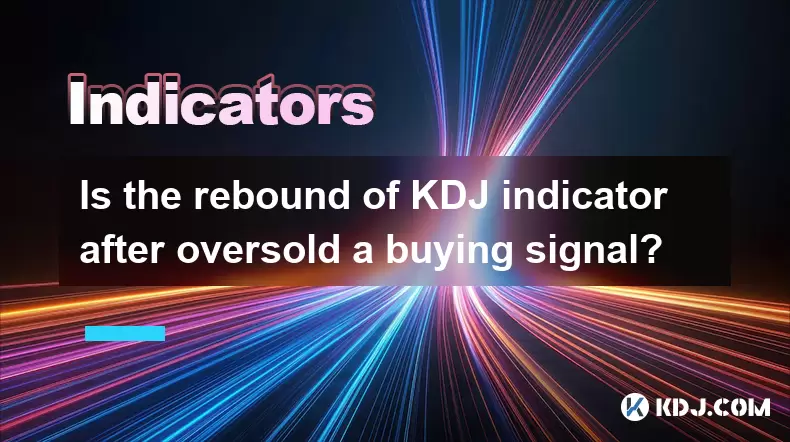
Understanding the KDJ Indicator in Cryptocurrency Trading
The KDJ indicator, also known as the stochastic oscillator, is a momentum-based technical analysis tool widely used in cryptocurrency trading. It consists of three lines: the %K line (fast stochastic), the %D line (slow stochastic), and the J line, which represents the divergence between %K and %D. This indicator helps traders identify overbought or oversold conditions, potential trend reversals, and possible entry points.
In the volatile world of cryptocurrencies, where price swings can be rapid and unpredictable, understanding how to interpret the KDJ indicator correctly becomes crucial. The core idea behind the KDJ is that during an uptrend, prices tend to close near their highs, while during a downtrend, they close near their lows.
Important:
When the KDJ enters the oversold zone (typically below 20), it may signal that the asset has been excessively sold and could be due for a correction.What Does Oversold Mean on the KDJ?
When the KDJ indicator dips below the 20 threshold, it suggests that the asset is in an oversold condition. In the context of cryptocurrency markets, this often occurs after a sharp sell-off or panic-driven price drop. However, being oversold doesn't necessarily mean the price will reverse immediately. Markets can remain oversold for extended periods, especially during strong bearish trends.
It's essential to understand that the KDJ’s oversold level acts more like a warning than a direct buy signal. Traders should look for additional confirmation before considering a long position. These include:
- A bullish crossover between the %K and %D lines
- Divergence between price action and the KDJ
- Positive candlestick patterns emerging
Note:
Relying solely on KDJ oversold readings without confluence from other indicators or chart patterns may lead to premature entries.Interpreting the Rebound of KDJ After Oversold
A rebound of the KDJ after reaching oversold levels indicates that buying pressure might be returning to the market. This is typically seen when the %K line crosses above the %D line within the oversold zone or shortly after it begins to rise. Such a scenario may suggest a short-term reversal or at least a pause in the downtrend.
However, in crypto trading, false signals are common due to high volatility and frequent manipulation. Therefore, traders should not treat every KDJ rebound from oversold territory as a confirmed buy signal. Instead, they should consider:
- The strength of the rebound — a quick and aggressive move upward is more significant than a slow crawl
- Volume accompanying the rebound — increased volume adds credibility to the signal
- The broader market context — is the overall trend bullish or bearish?
Caution:
Even if the KDJ rebounds from oversold levels, it can retreat again if the underlying sentiment remains negative.Combining KDJ with Other Technical Tools
To enhance the reliability of a potential buy signal from the KDJ rebound in oversold territory, it’s highly recommended to combine it with other forms of analysis. Popular tools among crypto traders include:
- Moving Averages (MA) – Look for crossovers or price bouncing off key moving averages
- Relative Strength Index (RSI) – Confirm whether RSI is also showing signs of a bottom
- Support and Resistance Levels – Identify if the price is approaching a critical support area
- Volume Analysis – Check if volume increases as the KDJ starts to rebound
For example, if the KDJ rebounds from below 20, the RSI also moves above 30, and the price finds support near a key moving average with rising volume, the probability of a successful trade increases significantly.
Tip:
Use multiple time frame analysis to confirm the KDJ signal — check daily, 4-hour, and 1-hour charts for alignment.Practical Steps to Trade the KDJ Rebound Signal
If you're planning to use the KDJ rebound from oversold levels as part of your trading strategy, follow these practical steps:
- Monitor the KDJ on your preferred time frame and wait for it to enter the oversold zone (below 20)
- Observe if the %K line starts to turn upwards and possibly crosses above the %D line
- Ensure there is some form of confluence, such as a bullish candlestick pattern or support level
- Place a stop-loss order below the recent swing low to manage risk
- Set a take-profit target based on previous resistance levels or using a risk-reward ratio (e.g., 1:2)
This method works best in ranging or consolidating markets. In trending environments, especially strong downtrends, the KDJ can give misleading signals. Always assess the bigger picture before entering a trade.
Warning:
Never ignore risk management principles, even when using what appears to be a strong KDJ signal.Frequently Asked Questions
Q: Can the KDJ indicator be used alone for making trading decisions in crypto?
While the KDJ provides valuable insights into momentum and overbought/oversold conditions, it's generally not advisable to rely on it exclusively. Combining it with other indicators and price action analysis improves its reliability.
Q: What time frame is best for using the KDJ in crypto trading?
There is no one-size-fits-all answer. Short-term traders may prefer 15-minute or 1-hour charts, while longer-term traders might focus on daily charts. Choose a time frame that aligns with your trading strategy and goals.
Q: How accurate is the KDJ in predicting price reversals in crypto?
Accuracy varies depending on market conditions. During strong trends, the KDJ can give many false signals. It performs better in sideways or choppy markets where price tends to revert to mean levels.
Q: What settings are commonly used for the KDJ in crypto trading?
The default setting for the KDJ is usually (9,3,3) — meaning a 9-period %K, a 3-period smoothing for %D, and a 3-period calculation for the J line. Some traders adjust these values based on their strategy and asset volatility.
Disclaimer:info@kdj.com
The information provided is not trading advice. kdj.com does not assume any responsibility for any investments made based on the information provided in this article. Cryptocurrencies are highly volatile and it is highly recommended that you invest with caution after thorough research!
If you believe that the content used on this website infringes your copyright, please contact us immediately (info@kdj.com) and we will delete it promptly.
- BAY Miner & XY Miners: Unlock Daily Earnings with BTC, DOGE, and LTC Cloud Mining
- 2025-06-20 10:25:12
- Decoding the Aaluxx Myth: Maya Protocol and the Smart Economy
- 2025-06-20 10:30:12
- Binance Wallet, Exclusive Token, Launch: What You Need to Know
- 2025-06-20 10:45:12
- Semler Scientific's Bitcoin Bet: Bold Move or Risky Gamble?
- 2025-06-20 10:50:12
- SHIB Eyes on Whale Activity and Shibarium Upgrade: Will It Trigger a Reversal?
- 2025-06-20 10:50:12
- Crypto Bull Run Expert Prediction: Navigating the Generational Surge
- 2025-06-20 08:25:12
Related knowledge
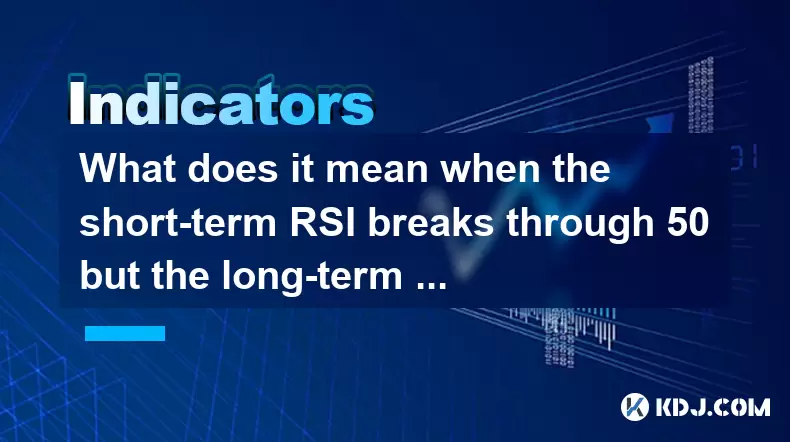
What does it mean when the short-term RSI breaks through 50 but the long-term RSI does not move in the RSI indicator?
Jun 20,2025 at 10:42am
Understanding the RSI Indicator and Its Dual-Term ApplicationThe Relative Strength Index (RSI) is a widely used momentum oscillator in technical analysis, primarily for identifying overbought or oversold conditions in an asset’s price movement. It typically operates on a scale from 0 to 100, with levels above 70 considered overbought and below 30 consid...
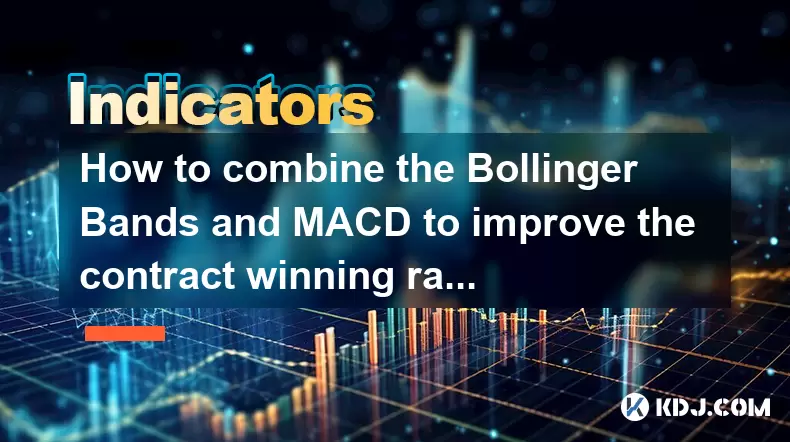
How to combine the Bollinger Bands and MACD to improve the contract winning rate?
Jun 19,2025 at 06:35pm
Understanding Bollinger Bands and MACD IndicatorsTo effectively combine Bollinger Bands and the MACD (Moving Average Convergence Divergence), it's essential to first understand what each indicator represents. Bollinger Bands consist of a middle moving average line and two outer bands that adjust based on market volatility. When prices move toward the up...
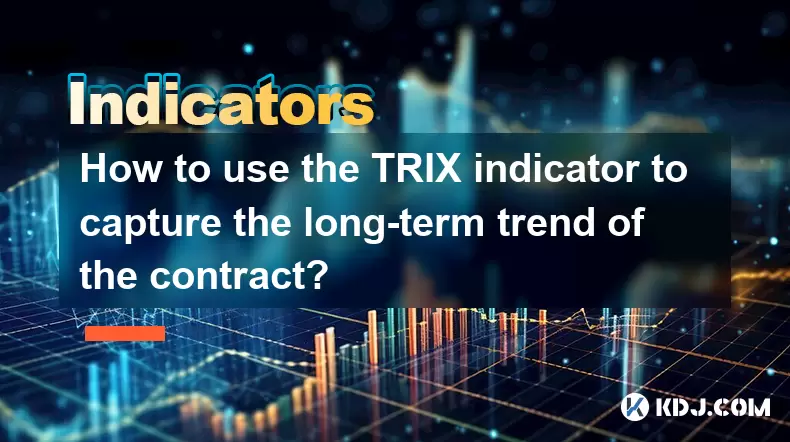
How to use the TRIX indicator to capture the long-term trend of the contract?
Jun 20,2025 at 09:14am
What Is the TRIX Indicator?The TRIX (Triple Exponential Average) indicator is a momentum oscillator used to identify oversold and overbought conditions, as well as potential trend reversals in financial markets. It is calculated by applying a triple exponential moving average to price data and then taking the percentage rate of change of that smoothed v...

How does the long lower shadow of the K line indicate the formation of the bottom of the contract?
Jun 19,2025 at 05:00am
Understanding the Long Lower Shadow in K-Line AnalysisIn cryptocurrency trading, K-line analysis plays a pivotal role in determining market sentiment and potential price reversals. A long lower shadow, also known as a long wick, is one of the most telling candlestick patterns that traders look for when assessing whether a bottom might be forming in a co...
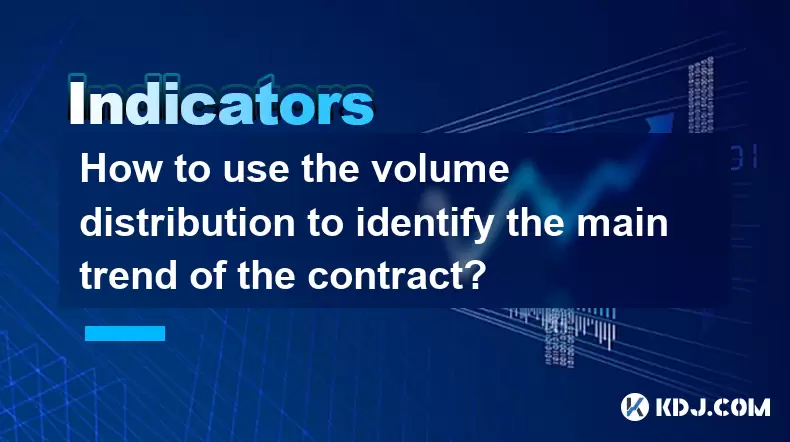
How to use the volume distribution to identify the main trend of the contract?
Jun 20,2025 at 03:56am
Understanding Volume Distribution in Cryptocurrency ContractsIn the realm of cryptocurrency trading, particularly within futures and perpetual contracts, volume distribution plays a pivotal role in deciphering market sentiment. Unlike spot markets, contract trading involves leveraged positions that can amplify both gains and losses. To navigate this com...
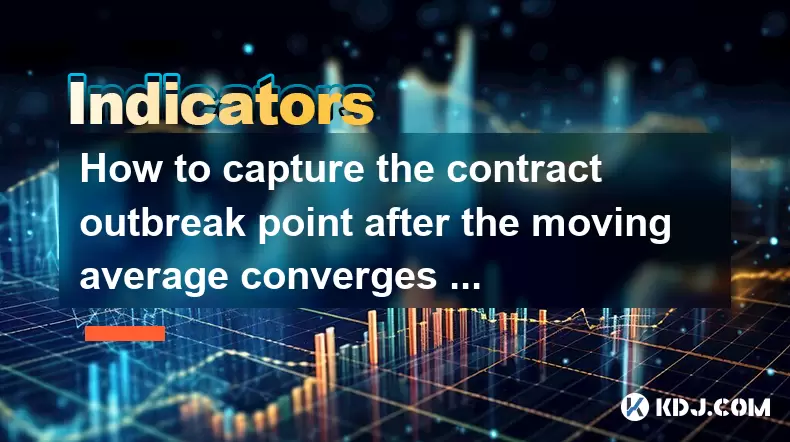
How to capture the contract outbreak point after the moving average converges and diverges?
Jun 19,2025 at 02:07pm
Understanding Moving Average Convergence and Divergence in Crypto TradingIn cryptocurrency trading, moving averages are among the most widely used technical indicators. The concept of convergence and divergence refers to how different moving averages align or separate over time. When short-term and long-term moving averages come together (converge), it ...

What does it mean when the short-term RSI breaks through 50 but the long-term RSI does not move in the RSI indicator?
Jun 20,2025 at 10:42am
Understanding the RSI Indicator and Its Dual-Term ApplicationThe Relative Strength Index (RSI) is a widely used momentum oscillator in technical analysis, primarily for identifying overbought or oversold conditions in an asset’s price movement. It typically operates on a scale from 0 to 100, with levels above 70 considered overbought and below 30 consid...

How to combine the Bollinger Bands and MACD to improve the contract winning rate?
Jun 19,2025 at 06:35pm
Understanding Bollinger Bands and MACD IndicatorsTo effectively combine Bollinger Bands and the MACD (Moving Average Convergence Divergence), it's essential to first understand what each indicator represents. Bollinger Bands consist of a middle moving average line and two outer bands that adjust based on market volatility. When prices move toward the up...

How to use the TRIX indicator to capture the long-term trend of the contract?
Jun 20,2025 at 09:14am
What Is the TRIX Indicator?The TRIX (Triple Exponential Average) indicator is a momentum oscillator used to identify oversold and overbought conditions, as well as potential trend reversals in financial markets. It is calculated by applying a triple exponential moving average to price data and then taking the percentage rate of change of that smoothed v...

How does the long lower shadow of the K line indicate the formation of the bottom of the contract?
Jun 19,2025 at 05:00am
Understanding the Long Lower Shadow in K-Line AnalysisIn cryptocurrency trading, K-line analysis plays a pivotal role in determining market sentiment and potential price reversals. A long lower shadow, also known as a long wick, is one of the most telling candlestick patterns that traders look for when assessing whether a bottom might be forming in a co...

How to use the volume distribution to identify the main trend of the contract?
Jun 20,2025 at 03:56am
Understanding Volume Distribution in Cryptocurrency ContractsIn the realm of cryptocurrency trading, particularly within futures and perpetual contracts, volume distribution plays a pivotal role in deciphering market sentiment. Unlike spot markets, contract trading involves leveraged positions that can amplify both gains and losses. To navigate this com...

How to capture the contract outbreak point after the moving average converges and diverges?
Jun 19,2025 at 02:07pm
Understanding Moving Average Convergence and Divergence in Crypto TradingIn cryptocurrency trading, moving averages are among the most widely used technical indicators. The concept of convergence and divergence refers to how different moving averages align or separate over time. When short-term and long-term moving averages come together (converge), it ...
See all articles

























































































